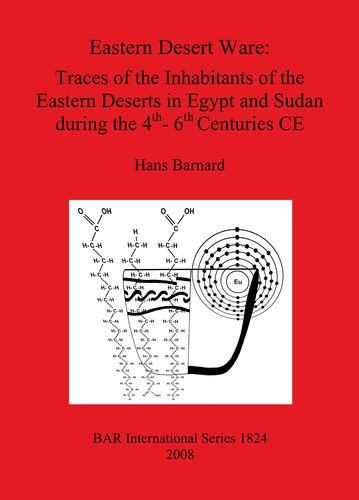

Most ebook files are in PDF format, so you can easily read them using various software such as Foxit Reader or directly on the Google Chrome browser.
Some ebook files are released by publishers in other formats such as .awz, .mobi, .epub, .fb2, etc. You may need to install specific software to read these formats on mobile/PC, such as Calibre.
Please read the tutorial at this link: https://ebookbell.com/faq
We offer FREE conversion to the popular formats you request; however, this may take some time. Therefore, right after payment, please email us, and we will try to provide the service as quickly as possible.
For some exceptional file formats or broken links (if any), please refrain from opening any disputes. Instead, email us first, and we will try to assist within a maximum of 6 hours.
EbookBell Team

4.3
78 reviewsThis study presents the first comprehensive description of a small corpus of ceramic vessels, now defined as Eastern Desert Ware (EDW). The vessels that comprise this corpus are hand-made cups and bowls, shaped without the use of a potter's wheel, with proportionally thin walls and well-finished surfaces. Larger vessels and closed forms do occur very sporadically, although these forms may so far have escaped recognition. Many of the outside and several inside surfaces of the vessels are burnished and decorated with geometrical patterns impressed or incised in the unfired clay. These patterns are often remarkably asymmetric and frequently enhanced by a white inlay or a partial red slip. Eastern Desert Ware has been found in archaeological contexts predominantly dated to the 4th-6th centuries CE, by associated pottery, coins, and radiocarbon analysis, in the Nile Valley between the Fifth Cataract, just north of where the Atbara debouches into the Nile, and the First Cataract near Aswan, as well as in the desert to the east, between Quseir and Port Sudan, an area of roughly 350,000 km² .